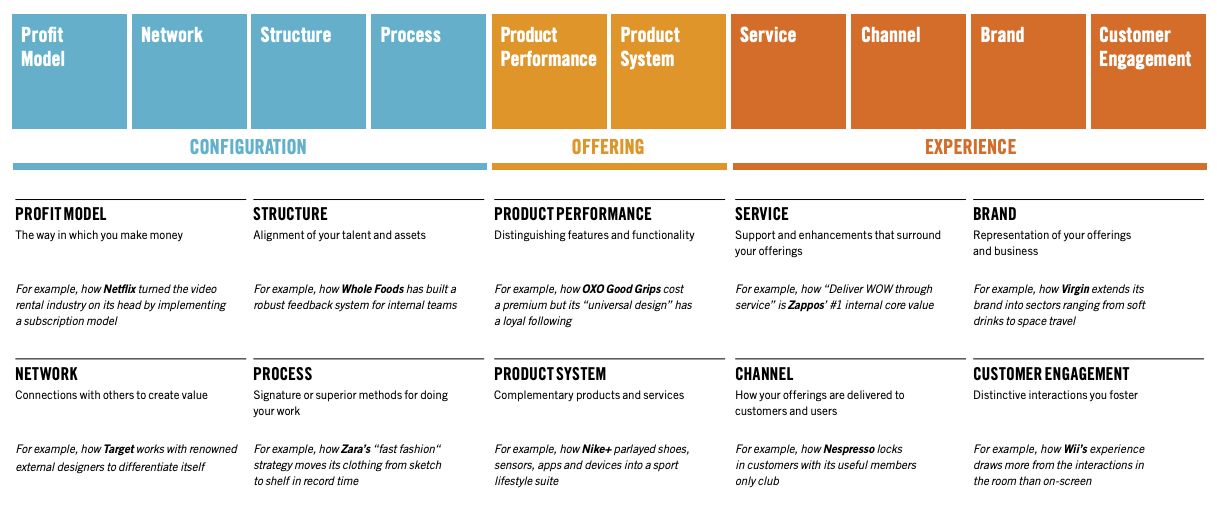When thinking about innovation as a strategy, most focus is on product attributes or technology that directly touches consumers. But advancement and differentiation for community financial institutions goes beyond just the features of your mobile app.
Efforts to create ideas and brainstorm new approaches are often a teeth-pulling exercise of sticky notes and endless lists, punctuated with the HIPPO (highest paid person’s opinion) driving the direction at the end of it.
Larry Keely, the co-founder of consulting firm Doublin and faculty at Kellogg’s MMM Program and Chicago’s highly regarded Institute of Design, developed the Ten Types of Innovation framework to solve this problem.
The ten areas expand beyond the “speeds and feeds” view of product. Placing focus on other areas enables organizations to differentiate in non-obvious ways and occupy a distinctive place in their customers’ minds.
To best leverage these distinct areas, the framework suggests the following considerations:
Understand all ten types - Virtually all projects can improve just by knowing and deeply understanding the value and subtleties of each of the types.
De-Emphasize Reliance on Products and Technology - These are the easiest capabilities for competitors to copy.
Think about Categories as well as Types - Consciously try to imagine new ways to configure assets, build platforms, and foster fresh experiences.
Use the Types that Matter Most - Use diagnostics to understand which types you and others in your industry tend to overlook.
Understand What Your Users Really Need - User research can help you know what is relevant to customers and what surprises other types might help to deliver.
Use Enough of the Types to Make a Splash - Using five or more types, integrated with care, is nearly always enough to reinvent a category and become newsworthy.
All of this gives you an approach to shifting your business model in a way that stands out and be more relevant to your market. While there are many things that are table stakes in community banking, pursuing an agenda that is just about parity with alternatives is a sure-fire path to mediocrity.
For example, few things are as commodified as soap. Method, founded in 2001, hails itself as the world’s largest green cleaning company. Aligning on the mantra of “cleaning designed with the future in mind,” Method took drastically different approaches to everything from their products’ ingredients to supplier selection, to packaging, and all the go-to-market positioning and messaging. For example:
PROCESS - Signature or superior methods for doing your work:
In a process the company calls “greensourcing,” Method worked with suppliers and manufacturers to track the environmental impact of making its products. It also identified best practices to improve the water, energy, and material efficiency of its manufacturing processes.With a strong emphasis on sustainability and environmental sensitivity, the vast majority of Method’s cleaning bottles are made from 100% post-consumer recycled plastic while the company itself is a “Cradle to Cradle” endorsed company; more than 60 of its products are certified with the C2C stamp of environmentally friendly approval. Internally, Method practices what it preaches: it offsets its carbon emissions, works within a LEED-certified sustainable office, and it does not test its products on animals.
For more information, Larry and the team wrote an excellent book. He also published a toolkit to aid in structured brainstorming and idea creation to streamline the process and get more engagement from participants. And if you’d like help applying this to your FI reach out, and let’s talk.

